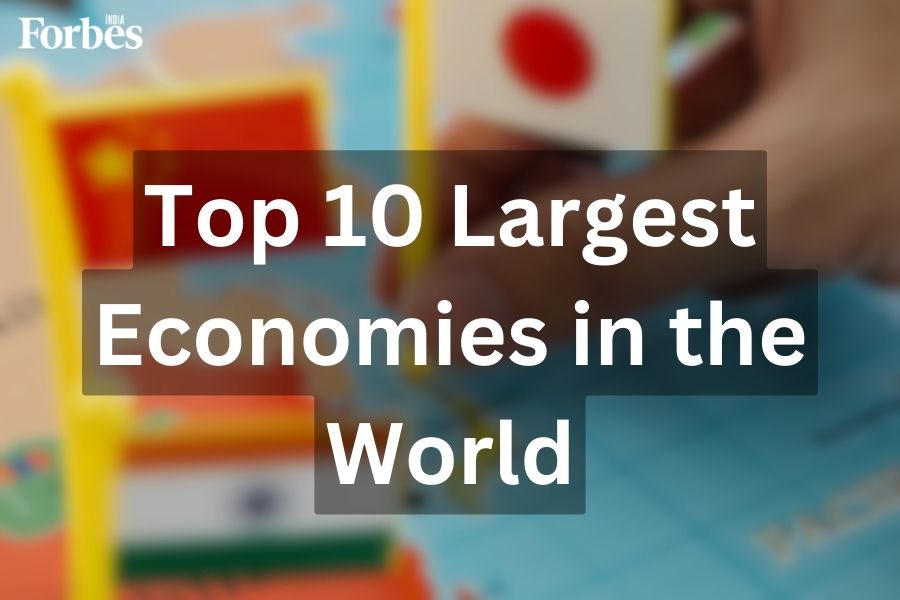What are the Next 10 Economies
As of 2025, the global economic landscape is both diversified and dynamic, showcasing a plethora of nations that play pivotal roles in shaping the world economy. Let’s delve into the next ten economies ranked by their nominal GDP, shedding light on each nation’s economic strengths and challenges.
| Rank & Country | GDP (USD billion) |
|---|---|
| #11 Russia | $2.08 trillion |
| #12 Spain | $1.80 trillion |
| #13 South Korea | $1.79 trillion |
| #14 Australia | $1.77 trillion |
| #15 Mexico | $1.69 trillion |
| #16 Türkiye | $1.44 trillion |
| #17 Indonesia | $1.43 trillion |
| #18 Netherlands | $1.27 trillion |
| #19 Saudi Arabia | $1.08 trillion |
| #20 Poland | $979.96 billion |
*Data is last updated on July, 2025.
#11 Russia: The Bear’s Economy
Russia stands tall at the 11th position with a GDP of $2.08 trillion. The nation’s economy is predominantly driven by its vast natural resources, especially oil and gas. Despite ongoing geopolitical tensions and sanctions, Russia’s energy sector remains resilient, catering to a significant portion of the global energy demands. Challenges such as demographic decline and investment fluctuations loom over potential growth, but the country’s raw material wealth gives it a cushion.
#12 Spain: The Iberian Revival
With a GDP of $1.80 trillion, Spain has seen a steady recovery post-economic crisis. This transformation is largely attributed to the tourism sector, which remains a critical pillar of the economy, complemented by growing industries in renewable energy and agriculture. The challenge ahead is Spain’s high unemployment rate and youth employment, which the government is striving to tackle through reforms and educational programs.
#13 South Korea: The Technological Powerhouse
Ranking 13th, South Korea boasts a GDP of $1.79 trillion, primarily due to its high-tech sector led by giants like Samsung and LG. The nation thrives on exports, particularly electronics and automobiles. However, the aging population poses potential economic challenges, pressing the government towards innovation-led growth and cultural exports, especially in entertainment and gaming.
#14 Australia: The Lucky Country
Australia, with a GDP of $1.77 trillion, continues to enjoy economic prosperity due to its abundant natural resources and strong service sector. Its economy is very resilient, marked by a robust real estate market and sustainable tourism. However, it faces challenges related to climate change and dependence on commodity exports, necessitating a push towards diversification.
#15 Mexico: The Emerging Market
With a GDP of $1.69 trillion, Mexico’s economy benefits from its strategic position and numerous trade agreements, including USMCA with the United States and Canada. The manufacturing sector plays a critical role, specifically automotive assembly. However, challenges such as corruption, income inequality, and drug-related violence remain hurdles in its quest for steady growth.
#16 Türkiye: Bridging Continents
At 16th place, Türkiye has a GDP of $1.44 trillion. Its location at the crossroads of Europe and Asia injects vibrancy into its economy, allowing it to engage in diverse trade. Türkiye’s industries range from textiles to automobile manufacturing. Ongoing political and economic volatility, coupled with inflation, calls for reform to stabilize and sustain its growth trajectory.
#17 Indonesia: The ASEAN Giant
Indonesia’s economy has grown to $1.43 trillion, making it the largest in Southeast Asia. The archipelago is rich in natural resources, fostering a strong agriculture and mining sector. The nation is also focusing on enhancing its infrastructure and digital economy, aiming for sustainable growth. The challenges of political stability and environmental sustainability require ongoing attention.
#18 Netherlands: The Logistics Hub
With a GDP of $1.27 trillion, the Netherlands serves as a global logistics and trade hub, owing to its strategic location in Europe. The economy is defined by innovation, with substantial contributions from the technology and agriculture sectors. However, challenges such as a tight labor market and housing supply issues present potential hurdles for future stability and growth.
#19 Saudi Arabia: Oil and Vision 2030
Saudi Arabia’s GDP stands at $1.08 trillion, primarily fueled by its vast oil reserves. In line with Vision 2030, the nation is actively working on diversifying its economy beyond oil, investing in sectors such as tourism, entertainment, and technology. However, the fluctuating nature of oil prices remains a concern, urging the need for diversified revenue streams.
#20 Poland: The European Contender
Poland rounds out the list with a GDP of approximately $979.96 billion. The nation’s economy has rebounded strongly post-pandemic, benefiting from robust manufacturing and services sectors. Its strategic position in Europe facilitates trade, while challenges such as demographic shifts and dependence on coal energy necessitate ongoing reforms aimed at sustainable development.
Frequently Asked Questions
1. How is Gross Domestic Product (GDP) computed?
GDP is calculated by adding up consumption (consumer spending), government expenditures, business investments, and net exports (the difference between exports and imports).
2. What are the top 10 poorest countries in the world?
As of 2025, the top ten poorest countries by GDP per capita include South Sudan, Burundi, Central African Republic, Malawi, Mozambique, Congo, Somalia, Liberia, Niger, and Madagascar.
3. What is the largest economy in Asia?
The largest economy in Asia is China, with a nominal GDP exceeding $18,270 billion in 2025.
4. What are the top 10 richest countries in the world?
The richest countries by GDP per capita include Luxembourg, Macao SAR, Ireland, Singapore, Qatar, United Arab Emirates, Switzerland, San Marino, the United States, and Norway.
Explore the intricacies of these economies, and stay informed about the changes shaping our world!



